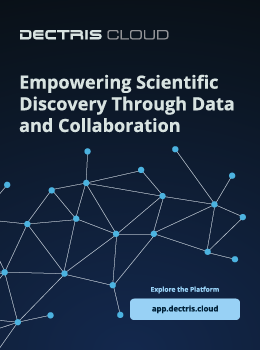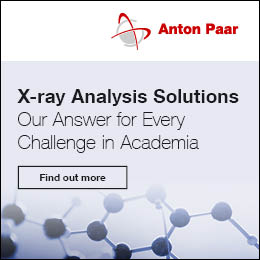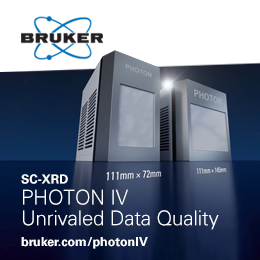
Interview
John Helliwell interview on new IUCr Springer Brief book
![thumbnail [thumbnail]](https://www.iucr.org/__data/assets/image/0007/160468/thumbnail.jpg)
A new IUCr Springer Brief book has just been published. For those who don’t know of this recent initiative of the IUCr, led by Professor Dr Massimo Nespolo, it is described here:
https://www.springer.com/series/16236
The new book is by John Helliwell, an Emeritus Professor at the Department of Chemistry, University of Manchester, UK. It is entitled:
Certifying Central Facility Beamlines for Biological and Chemical Crystallography and Allied Methods: Synchrotrons, X-ray Lasers, Neutrons and Electrons.
![[image1]](https://www.iucr.org/__data/assets/image/0008/160469/image1.png) Book cover.
Book cover.
Kezia Q: What are your aims in writing this Springer Brief book?
John A: I want to provide a guide for beamline providers and for users, whose perspectives are rather different, on what to look for in providing facilities and selecting experiments for a given type of facility and beamline so that beam time usage and effectiveness can be maximised. I believe that my 5 decades of experience in these domains could be useful. Things have changed a great deal over these decades. So, to select one aspect of these changes, there has been a major evolution in harnessing the new digital storage technologies for data measured at the synchrotron, neutron and XFEL facilities, which, of course, is radically changing society as well. This evolution, indeed a revolution, is still ongoing. There has also been a major evolution of policy thinking on facility publication, data management and sharing policies. These form part of a developing view of (a more) open science for the public good. Naturally, I provide tabulations of these experimental facilities globally.
Kezia Q: This is a rather new style of book, the Brief book. How did you approach writing it?
John A: Springer have introduced these for many fields of science, not only crystallography. They have a clear and very helpful set of descriptions and a proposal template, which helped clarify my own thinking about them. Springer defines them as 'succinct summaries of cutting-edge research and practical applications covering a range of content from professional to academic and featuring compact volumes from 50 to 125 pages'. The aims (https://www.springer.com/series/16236) include topics such as providing a ‘bridge between new research results and a contextual literature review’ and ‘A presentation of core concepts that students must understand in order to make independent contributions.’ This last aim is the more challenging aspect, in my opinion, especially with respect to students, where practical experimental experience is as important, or more so actually, as reading a book or having tutorials.
In general, the word ‘brief,’ I think, also has several different meanings, namely: short duration, concise summary, or informing someone thoroughly, especially in preparation for a task. The first of these meanings relates to these books being relatively quick to read and hopefully digest. The second meaning is that they are not verbose and are a summary.
Kezia Q: You have written a research monograph on aspects of these topics before. Is this new one an update?
John A: Yes indeed, some 30 years ago, I published my Macromolecular Crystallography with Synchrotron Radiation research monograph with Cambridge University Press, which comprised more than 600 pages. At the time, I was also heavily involved in proposing, developing, and managing beamlines for macromolecular crystallography at the UK’s SRS. My efforts included generating spin-off applications for synchrotron radiation chemical crystallography and solution X-ray scattering. I also helped launch analytical services to industry, which became the Daresbury Analytical Research Technical Services (known simply as DARTS). The beamlines operating at the UK’s SRS provided a platform for the proposals for macromolecular crystallography at the European Synchrotron Radiation Project, based at that time in the mid-1980s at CERN in Geneva. These proposals formed a part of the ESRF Foundation Phase Report (1987), which led to the construction of the ESRF as a facility in Grenoble in the 1990s. My monograph book was published in paperback in 2005. I considered a second edition, but the field had expanded so enormously. It had helped to stimulate neutron Laue macromolecular crystallography at the Institut Laue Langevin in Grenoble, which needed a description alongside the synchrotron applications. Overall, when the opportunity came up to write a Springer Brief book in 2023, I thought ‘aha’ this is a good opportunity to bring the very practical aspects of providing and using beamlines up to date. I hope this Brief book will be as useful as my synchrotron radiation monograph has been, having made it into paperback.
Kezia Q: The IUCr has a wide variety of Commissions that span cognate areas to crystallography, such as scattering from solutions, diffraction from powders, as well as the X-ray and NMR spectroscopies, and use of electrons and neutrons, as well as X-rays, as probes of the structure of matter. How did you capture these cognate topics in your Brief book?
John A: Yes indeed, like structural chemistry, structural biology has adopted and developed many probes to seek to understand living systems at a detailed i.e. molecular level. I viewed it as essential in this Brief Book to include electron bioimaging and all the relevant domains of the IUCr’s Commissions. Indeed, synchrotron radiation facilities have also operated electron bioimaging facilities in recent years.
Kezia Q: Tell us a bit about your relevant career experience.
John A: To provide more details on my work at the UK’s SRS at the UK’s Daresbury Laboratory, I was involved in various periods of appointment between 1979 and 2008, including in 2002 as Director of Synchrotron Radiation Science. These were a mix of jointly with the Universities of Keele and York, and for a long time the University of Manchester (1989 to 2012), as well as full time at Daresbury. I led the Working Group for Macromolecular Crystallography within the European Synchrotron Radiation Project, the ‘ESRP’, based in CERN, Geneva, which, of course, became the ESRF when its location was settled to being in Grenoble adjacent to the Institut Laue Langevin neutron facility. I became Vice Chairman of the ESRF Science Advisory Committee (SAC) and represented the ESRF SAC at the Machine Advisory Committee. I also served on the ESRF Council as the scientist in the UK’s Delegation. This was all very new stuff, not least as the ESRF was the first of the 3rd generation synchrotron facilities worldwide. The ESRF is a much larger facility than the SRS, nearly 900 metres in circumference versus about 100 metres! The IUCr invited me to form a Commission on Synchrotron Radiation in the early 1990s, which I was pleased to take on. In the past 30 years, I have Chaired several international advisory committees for synchrotron, and more recently neutron, facilities’ development, and their users’ science, most recently at the Spanish Synchrotron Radiation Source, ALBA, in Barcelona and the European Spallation Neutron Source in Lund. In a nutshell, I am a trained physicist who became a professor of chemistry working on proteins, predominantly protein crystallography.
Kezia Q: Did you ask close colleagues to comment on your book draft?
John A: Yes absolutely. Of course, I must first acknowledge Professor Dr Massimo Nespolo, the leader of the Springer Briefs in Crystallography, for his help and constructive criticism in formulating my Springer Brief proposal. Also, for these past 5 decades, all the time my work has been collaborative, and so I must give a heartfelt thanks to all my students and research staff, in the universities and in the scientific civil service, and to the many colleagues I have met in conferences and in my representational and community service roles, who have all greatly enriched my interests and my understanding. Several of them have commented directly on my draft. I would also emphasise that I was greatly encouraged in considering writing this Springer Brief by giving the opening lecture at the Synchrotron Radiation Workshop entitled "A practical approach to synchrotron experiments", which was on day zero of the IUCr Congress in Melbourne, Australia, held in August 2023. This Workshop was splendidly organised by Dr Dubravka Sisak-Jung under the auspices of the Swiss Crystallography Association.
Copyright © - All Rights Reserved - International Union of Crystallography







